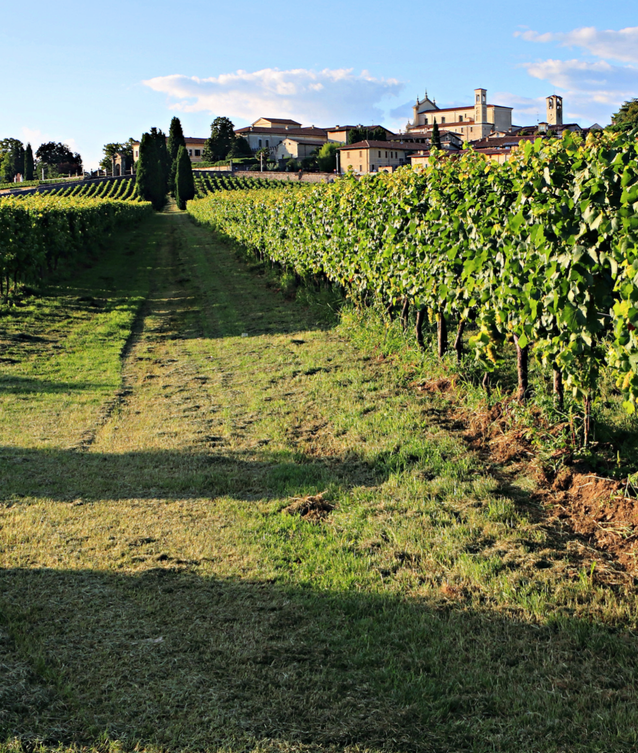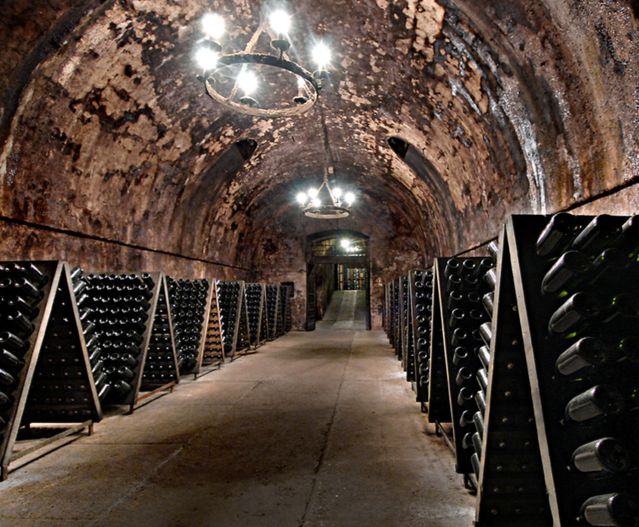
Both are Italian whites, and both are bubbly. But what’s the difference between Prosecco and Franciacorta?
This is what I learned after contacting the two production associations and talking to Maurizio Zanella (Franciacorta Consortium). There are three basic differences. First: the area where the grapes are grown (each one differs in minerals and exposure). Second: the kinds of grapes that are used (meaning the varieties). Third and most important: the method used to make the bubbles. For Franciacorta, the classic method is used, meaning second fermentation in the bottle for at least 18 months, followed by disgorging – opening the bottle to remove the yeast deposit – and dosage, meaning the addition of a liqueur d’expédition to create rather dry wines. For Prosecco, the Martinotti method is used, meaning that refermentation takes place in airproof vats called autoclaves (minimum 30 days) before bottling.
To summarize: Prosecco is quick, young and to be consumed immediately. Franciacorta is slower, more long-lived, to be consumed between a few months up to even two years (or more) after disgorging, which is indicated on the back label. The different timing and production methods explain the difference in the quality and price of the two wines. Interested in details? Here’s a comparison, with all the figures.

FRANCIACORTA
NAME
Franciacorta DOCG, controlled and guaranteed designation of origin, protected by the European Union. The word Franciacorta on the label refers to a geographical area, but also to a production method and a wine (as is the case with Champagne). PRODUCTION AREA Franciacorta, province of Brescia, Lombardy.
GRAPE VARIETIES
Chardonnay, Pinot Noir, Pinot Blanc (up to a maximum of 50%).
HECTARES UNDER VINE
(For the wine with designated origin) 3150.
GRAPES HARVESTED PER HECTARE
9500kg, or nearly 10.5 tons.
PRODUCTION TECHNIQUES
Classic method, natural second fermentation in the bottle followed by slow maturation and aging on the lees, no less than 18 months, 30 for single-vintages and 60 for reserves.
IN THE GLASS
Straw yellow with golden highlights, fine and persistent perlage. Palate: overtones of bread crusts and yeast, enriched by delicate citrusy notes and hints of nuts and dried fruit (almonds, hazelnuts, dried figs).
BOTTLES PRODUCED IN 2015
16 million.

PROSECCO
NAME
“Prosecco” DOC (Controlled Designation of Origin, quality seal) and two DOCGs, “Conegliano Valdobbiadene – Prosecco” and “Colli Asolani – Prosecco” (or “Asolo” – “Prosecco”).
PRODUCTION AREA
9 provinces in Veneto (Treviso, Venice, Belluno, Padua and Vicenza) and all of Friuli-Venezia Giulia (Trieste, Udine, Gorizia, Pordenone).
GRAPE VARIETIES
Glera (minimum 85%). Up to 15% Verdiso, Bianchetta Trevigiana, Perera, Glera lunga, Chardonnay, Pinot Blanc, Pinot Gris and Pinot Noir, fermented without the skins, can be used.
HECTARES UNDER VINE
20,250.
GRAPES HARVESTED PER HECTARE
18,000 kg, or 19.8 tons.
MARTINOTTI METHOD
Second fermentation in an autoclave. The wine is then bottled.
IN THE GLASS
Straw yellow varying in intensity, brilliant color, with persistent bubbles (in the sparkling version). Palate: notes of white flowers (acacia) and fresh fruit (apple, peach).
BOTTLES PRODUCED IN 2015
400 million.

ADDRESSES
For Franciacorta
WHERE TO BUY THE WINES
Restaurants, wine shops, tasting sessions and cooking courses.
Dispensa Pani E Vini Franciacorta
Borgo Principe Umberto, 23 25030 Adro
www.dispensafranciacorta.com
WHERE TO SPEND THE NIGHT
Agriturismo Locanda
Le Quattro Terre
Via Risorgimento, 11
25040 Corte Franca (Brescia) www.quattroterre.it
For a lovely lunch:
Hostaria Uva Rara
Via Foina, 42
25040 Monticelli Brusati
www.hostariauvarara.it


